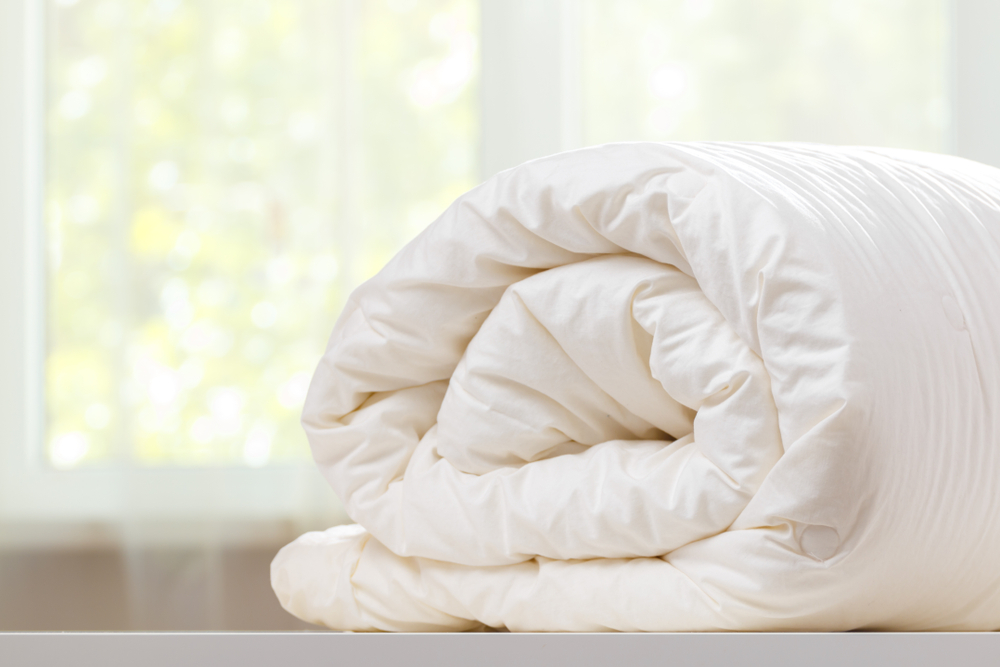
October 31, 2024
Different Ways to Wash and Clean a Comforter
Your comforter is more than just a cozy layer on your bed—it’s a crucial part of your sleep experience. However, like all bedding, comforters gather dust, sweat, oils, and allergens over time. Regularly cleaning your comforter helps to maintain its quality, hygiene, and comfort level. While washing such a bulky item may seem intimidating, the process doesn’t have to be overwhelming. This guide will show you various methods to wash and clean a comforter, keeping it fresh and fluffy.
The Challenges and Benefits of Cleaning Your Comforter
Comforters are thick, fluffy, and can be filled with down, synthetic fibers, or cotton, making them tricky to clean. Many standard washing machines can’t accommodate the size, and improper washing techniques can lead to lumps, damaged filling, or even tears in the fabric.
Despite these challenges, the benefits of regular cleaning far outweigh the risks. A clean comforter provides better sleep, reduces allergens, and prolongs the life of your bedding. This is even more important if you live in a busy city like New York, where dust and dirt are part of everyday life. Regular washing ensures your comforter remains fresh and free from unwanted dirt and allergens that may affect your health.
How Often Should You Clean Your Comforter?
While sheets and pillowcases need frequent washing, comforters don’t require such high maintenance. You can clean your comforter every three to six months, depending on how much you use it. If you use a duvet cover, which you can easily wash, you might be able to stretch this time frame a bit longer. However, cleaning your comforter more frequently is a good idea if you suffer from allergies or have pets.
Different Ways to Clean Comforters
Now, let’s explore the different ways to clean your comforter properly.
Washing in a Larger Washing Machine
Comforters can be pretty bulky, making it difficult to wash them in standard-sized machines. Many residential washing machines are too small to handle a comforter without causing damage to the machine or the bedding itself. If you’ve ever tried to shove a thick comforter into a small washer, you know what a struggle it can be!
The solution? Use a larger washing machie, ideally designed for heavy loads. Laundromats often have machines built explicitly for bulky items like comforters, and it’s a great option if you don’t have access to a large machine at home. If you live in a city like NYC, laundromats are everywhere, making it easy to find a machine that can accommodate your comforter.
Always Read the Care Label
Always check the care label before you toss your comforter into the wash. The label provides essential information like washing instructions, water temperature, and whether to machine wash or dry clean the comforter.
For example, down comforters often require a delicate touch and special detergents. You can wash some synthetic comforters normally, while others require gentle treatment. Following the care label instructions is crucial for maintaining your comforter’s quality and preventing damage during washing.t
Inspect and Treat Stains Before Washing
Before you start washing, inspect your comforter for stains. Common stains can come from sweat, body oils, spills, or pet accidents. Treating these spots before washing is essential to ensure the stain doesn’t become permanent.
Use a gentle stain remover or mix water with a mild detergent. Apply the solution and make sure it completely covers the affected area. Then, take a soft cloth and gently dab the area, working from the outside of the stain toward the center. Let it sit for 10 to 15 minutes before putting the comforter in the washing machine. This technique helps lift the stain without spreading it further or damaging the fabric.

Remove the Duvet Cover (If You Use One)
If a duvet cover protects your comforter, you’re already one step ahead! You can easily remove and wash duvet covers, simplifying the process. If the cover is the only part that gets dirty, you can clean it without dealing with the bulk of the comforter.
This is an excellent tip for extending the time between deep washes. Washing your duvet cover regularly will protect the comforter from daily dirt, dust, and allergens, reducing the need to clean it as often.
Choose the Right Temperature Settings
When it comes to washing comforters, the temperature of the water matters. Using the wrong temperature can cause the filling to clump, shrink the fabric, or ruin the material.
For synthetic comforters, warm water is usually the best choice. It’s gentle on the fabric but effective enough to clean thoroughly. Cold water is often recommended for down comforters to prevent the feathers from clumping together. The care label on your comforter will offer guidance on the best water temperature to use, but in general, stick to gentle cycles and avoid hot water unless specified.
Different Drying Methods
Drying your comforter properly is just as important as washing it. Improper drying can lead to clumping, shrinkage, or even mold growth if the comforter is left damp for too long. There are two main methods for drying your comforter:
Air Drying
Air drying is the gentlest method but also the most time-consuming. Hang your comforter outdoors on a clothesline or drying rack, making sure it’s spread out evenly. This may be tricky if you live in an urban area like New York, but if you have outdoor space or a balcony, it can work. You’ll need to shake it out and fluff it regularly to maintain its shape.
Tumble Drying with Tennis Balls
If air drying isn’t an option, you can tumble dry your comforter in a dryer. Use a low-heat setting and add a couple of clean tennis balls or dryer balls. These will help keep the filling from clumping together and ensure the comforter dries evenly. Depending on the size of your comforter, drying may take a few hours, so be patient. Make sure to check it periodically to prevent overheating or fabric damage.
Fluffing and Final Touches
Once your comforter is dry, give it a good shake to fluff it up and redistribute the filling. This will help restore its loft and ensure it remains comfortable. If you used tennis balls during drying, you might not need to do much fluffing, but checking for any areas needing extra attention is still a good idea.
After fluffing, inspect your comforter for any remaining stains or damage. If everything looks good, it’s ready to return to your bed!
Why Work with White Glove Cleaner in NYC?
Washing a comforter at home can take a lot of time and effort, particularly if you lack a large washing machine or the appropriate cleaning supplies. That’s where professional laundry services like White Glove Cleaner come in. White Glove Cleaner offers top-notch laundry services and home cleaning services in Manhattan tailored to your needs.
Whether you have a delicate down comforter or a bulky synthetic one, their expert team knows how to handle all types of bedding. White Glove Cleaner ensures that your comforter gets the care it deserves, leaving it fresh, clean, and as good as new. Plus, finding the time to clean your comforter properly in a busy city like NYC can be challenging. White Glove Cleaner eliminates the hassle by providing pick-up and delivery services, so you don’t have to leave your apartment. Our professional care will extend the life of your comforter, helping you maintain a clean, healthy sleep environment without any stress.
